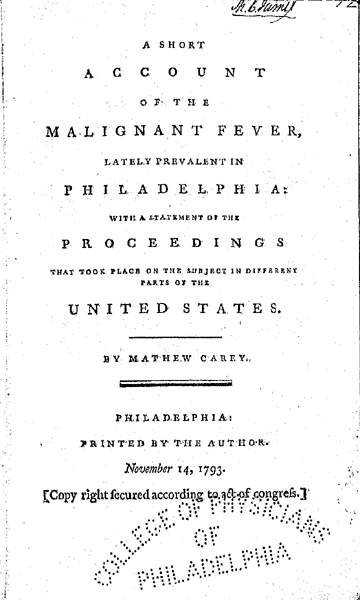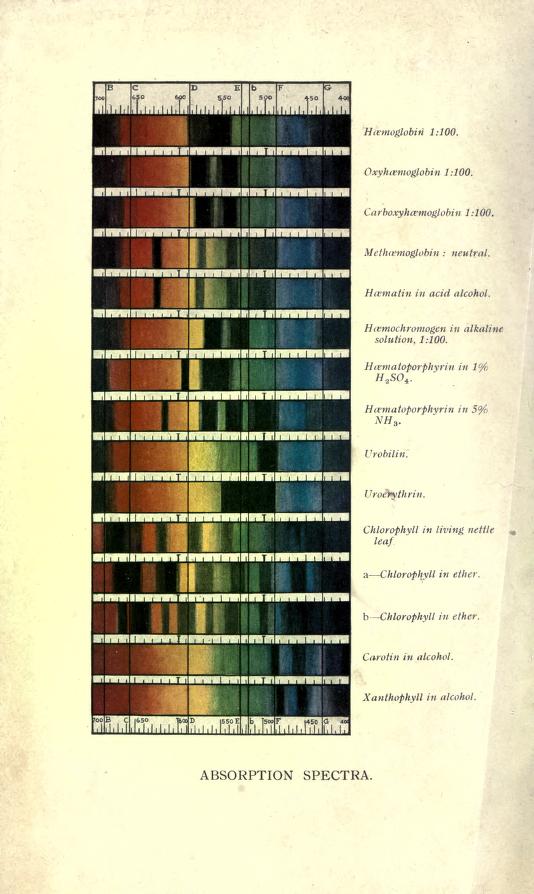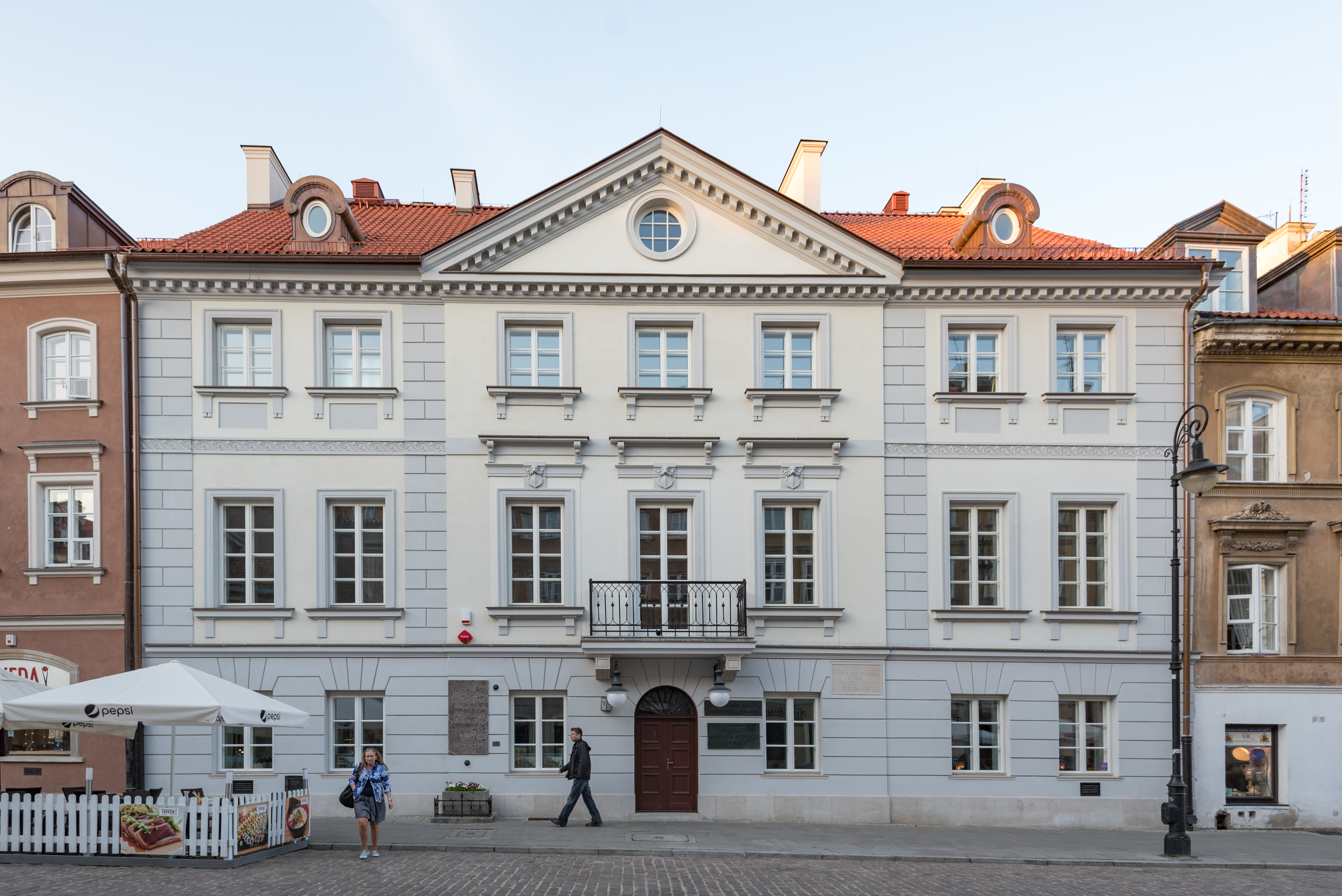|
College Of Physicians Of Philadelphia
The College of Physicians of Philadelphia is the oldest private medical society in the United States. Founded in 1787 by 24 Philadelphia physicians "to advance the Science of Medicine, and thereby lessen human misery, by investigating the diseases and remedies which are peculiar to our country" and to promote "order and uniformity in the practice of Physick," it has made important contributions to medical education and research. The College hosts the Mütter Museum, a gallery of 19th-century specimens, teaching models, instruments, and photographs, as well as the Historical Medical Library, which is one of the country's oldest medical libraries. The College of Physicians of Philadelphia Building, designed by the firm of Cope & Stewardson and built in 1909, was designated a U.S. National Historic Landmark in October, 2008. It was also then listed on the National Register of Historic Places. Current programs The College remains a private membership organization of physicians, whose ... [...More Info...] [...Related Items...] OR: [Wikipedia] [Google] [Baidu] |
Philadelphia, Pennsylvania
Philadelphia, often called Philly, is the largest city in the Commonwealth of Pennsylvania, the sixth-largest city in the U.S., the second-largest city in both the Northeast megalopolis and Mid-Atlantic regions after New York City. Since 1854, the city has been coextensive with Philadelphia County, the most populous county in Pennsylvania and the urban core of the Delaware Valley, the nation's seventh-largest and one of world's largest metropolitan regions, with 6.245 million residents . The city's population at the 2020 census was 1,603,797, and over 56 million people live within of Philadelphia. Philadelphia was founded in 1682 by William Penn, an English Quaker. The city served as capital of the Pennsylvania Colony during the British colonial era and went on to play a historic and vital role as the central meeting place for the nation's founding fathers whose plans and actions in Philadelphia ultimately inspired the American Revolution and the nation's inde ... [...More Info...] [...Related Items...] OR: [Wikipedia] [Google] [Baidu] |
Charles J
Charles is a masculine given name predominantly found in English and French speaking countries. It is from the French form ''Charles'' of the Proto-Germanic name (in runic alphabet) or ''*karilaz'' (in Latin alphabet), whose meaning was "free man". The Old English descendant of this word was '' Ċearl'' or ''Ċeorl'', as the name of King Cearl of Mercia, that disappeared after the Norman conquest of England. The name was notably borne by Charlemagne (Charles the Great), and was at the time Latinized as ''Karolus'' (as in ''Vita Karoli Magni''), later also as '' Carolus''. Some Germanic languages, for example Dutch and German, have retained the word in two separate senses. In the particular case of Dutch, ''Karel'' refers to the given name, whereas the noun ''kerel'' means "a bloke, fellow, man". Etymology The name's etymology is a Common Germanic noun ''*karilaz'' meaning "free man", which survives in English as churl (< Old English ''ċeorl''), which developed its depr ... [...More Info...] [...Related Items...] OR: [Wikipedia] [Google] [Baidu] |
University Of Pennsylvania School Of Medicine
The Perelman School of Medicine, commonly known as Penn Med, is the medical school of the University of Pennsylvania, a private research university in Philadelphia, Pennsylvania. Founded in 1765, the Perelman School of Medicine is the oldest medical school in the United States and is one of the seven Ivy League medical schools. Penn Med is consistently one of the top recipients of NIH research awards and is currently ranked sixth for research among American medical schools by '' U.S. News & World Report''. History The school of medicine was founded by Dr. John Morgan, a graduate of the College of Philadelphia (the precursor of the University of Pennsylvania) and the University of Edinburgh Medical School. After training in Edinburgh and other European cities, Dr. Morgan returned to Philadelphia in 1765. With fellow University of Edinburgh Medical School graduate Dr. William Shippen Jr., Morgan persuaded the college's trustees to found the first medical school in the Original ... [...More Info...] [...Related Items...] OR: [Wikipedia] [Google] [Baidu] |
Quaker
Quakers are people who belong to a historically Protestant Christian set of Christian denomination, denominations known formally as the Religious Society of Friends. Members of these movements ("theFriends") are generally united by a belief in each human's ability to experience Inward light, the light within or see "that of God in every one". Some profess a priesthood of all believers inspired by the First Epistle of Peter. They include those with evangelicalism, evangelical, Holiness movement, holiness, Mainline Protestant, liberal, and Conservative Friends, traditional Quaker understandings of Christianity. There are also Nontheist Quakers, whose spiritual practice does not rely on the existence of God. To differing extents, the Friends avoid creeds and Hierarchical structure, hierarchical structures. In 2017, there were an estimated 377,557 adult Quakers, 49% of them in Africa. Some 89% of Quakers worldwide belong to ''evangelical'' and ''programmed'' branches that hold ... [...More Info...] [...Related Items...] OR: [Wikipedia] [Google] [Baidu] |
Medical Heritage Library
The Medical Heritage Library (MHL) is a digital curation collaborative among several medical libraries which promotes free and open access to quality historical resources in medicine. The MHL is currently digitizing books and journals and is working to expand to the digitization of archival materials and still images. In 2010, the MHL began digitizing titles, mainly monographs, in a variety of medical history and related fields including chemistry, nursing, dentistry, audiology, physiology, psychology, psychiatry, biological science, hydrotherapy, weather, veterinary medicine, gardening, physical culture, and alternative medicine chosen for their scholarly, educational, and research value. Since the inception of the project, materials in audio and video formats have been added to the collection. Goals The MHL works to: # Develop an organizational structure that will ensure sustainability of MHL activities # Increase institutional membership to ensure rich content contributions a ... [...More Info...] [...Related Items...] OR: [Wikipedia] [Google] [Baidu] |
Andreas Vesalius
Andreas Vesalius (Latinized from Andries van Wezel) () was a 16th-century anatomist, physician, and author of one of the most influential books on human anatomy, ''De Humani Corporis Fabrica Libri Septem'' (''On the fabric of the human body'' ''in seven books''). Vesalius is often referred to as the founder of modern human anatomy. He was born in Brussels, which was then part of the Habsburg Netherlands. He was a professor at the University of Padua (1537–1542) and later became Imperial physician at the court of Emperor Charles V. ''Andreas Vesalius'' is the Latinized form of the Dutch name Andries van Wesel. It was a common practice among European scholars in his time to Latinize their names. His name is also given as ''Andrea Vesalius'', ''André Vésale'', ''Andrea Vesalio'', ''Andreas Vesal'', ''Andrés Vesalio'' and ''Andre Vesale''. Early life and education Vesalius was born as Andries van Wesel to his father Anders van Wesel and mother Isabel Crabbe on 31 December 151 ... [...More Info...] [...Related Items...] OR: [Wikipedia] [Google] [Baidu] |
De Humani Corporis Fabrica
''De Humani Corporis Fabrica Libri Septem'' (Latin, lit. "On the fabric of the human body in seven books") is a set of books on human anatomy written by Andreas Vesalius (1514–1564) and published in 1543. It was a major advance in the history of anatomy over the long-dominant work of Galen, and presented itself as such. The collection of books is based on his Paduan lectures, during which he deviated from common practice by dissecting a corpse to illustrate what he was discussing. Dissections had previously been performed by a barber surgeon under the direction of a doctor of medicine, who was not expected to perform manual labour. Vesalius's ''magnum opus'' presents a careful examination of the organs and the complete structure of the human body. This would not have been possible without the many advances that had been made during the Renaissance, including artistic developments in literal visual representation and the technical development of printing with refined woodcut e ... [...More Info...] [...Related Items...] OR: [Wikipedia] [Google] [Baidu] |
William Harvey
William Harvey (1 April 1578 – 3 June 1657) was an English physician who made influential contributions in anatomy and physiology. He was the first known physician to describe completely, and in detail, the systemic circulation and properties of blood being pumped to the brain and the rest of the body by the heart, though earlier writers, such as Realdo Colombo, Michael Servetus, and Jacques Dubois, had provided precursors of the theory. Family William's father, Thomas Harvey, was a jurat of Folkestone where he served as mayor in 1600. Records and personal descriptions delineate him as an overall calm, diligent, and intelligent man whose "sons... revered, consulted and implicitly trusted in him... (they) made their father the treasurer of their wealth when they acquired great estates...(He) kept, employed, and improved their gainings to their great advantage." Thomas Harvey's portrait can still be seen in the central panel of a wall of the dining room at Rolls Park, Chig ... [...More Info...] [...Related Items...] OR: [Wikipedia] [Google] [Baidu] |
De Motu Cordis
''Exercitatio Anatomica de Motu Cordis et Sanguinis in Animalibus'' (Latin, 'An Anatomical Exercise on the Motion of the Heart and Blood in Living Beings'), commonly called ''De Motu Cordis'', is the best-known work of the physician William Harvey, which was first published in 1628 and established the circulation of blood throughout the body. It is a landmark in the history of physiology, with Harvey combining observations, experiments, measurements, and hypotheses in an extraordinary fashion to arrive at his doctrine. His work is a model of its kind and had an immediate and far-reaching influence on Harvey's contemporaries; Thomas Hobbes said that Harvey was the only modern author whose doctrines were taught in his lifetime. In ''De motu cordis'', Harvey investigated the effect of ligatures on blood flow. The book also argued that blood was pumped around the body in a "double circulation", where after being returned to the heart, it is recirculated in a closed system to the lun ... [...More Info...] [...Related Items...] OR: [Wikipedia] [Google] [Baidu] |
Giambattista Morgagni
Giovanni Battista Morgagni (25 February 1682 – 6 December 1771) was an Italian anatomist, generally regarded as the father of modern anatomical pathology, who taught thousands of medical students from many countries during his 56 years as Professor of Anatomy at the University of Padua. His most significant literary contribution, the monumental five-volume ''On the Seats and Causes of Disease'', embodied a lifetime of experience in anatomical dissection and observation, and established the fundamental principle that most diseases are not vaguely dispersed throughout the body, but originate locally, in specific organs and tissues. Education His parents were in comfortable circumstances, but not of the nobility; it appears from his letters to Giovanni Maria Lancisi that Morgagni had ambitions to improve his rank. It may be inferred that he succeeded from the fact that he is described on a memorial tablet at Padua as ''nobilis forolensis'', "noble of Forlì", apparently by right ... [...More Info...] [...Related Items...] OR: [Wikipedia] [Google] [Baidu] |
Yellow Fever 1793
Yellow is the color between green and orange on the spectrum of light. It is evoked by light with a dominant wavelength of roughly 575585 nm. It is a primary color in subtractive color systems, used in painting or color printing. In the RGB color model, used to create colors on television and computer screens, yellow is a secondary color made by combining red and green at equal intensity. Carotenoids give the characteristic yellow color to autumn leaves, corn, canaries, daffodils, and lemons, as well as egg yolks, buttercups, and bananas. They absorb light energy and protect plants from photo damage in some cases. Sunlight has a slight yellowish hue when the Sun is near the horizon, due to atmospheric scattering of shorter wavelengths (green, blue, and violet). Because it was widely available, yellow ochre pigment was one of the first colors used in art; the Lascaux cave in France has a painting of a yellow horse 17,000 years old. Ochre and orpiment pigments were used ... [...More Info...] [...Related Items...] OR: [Wikipedia] [Google] [Baidu] |
Marie Curie
Marie Salomea Skłodowska–Curie ( , , ; born Maria Salomea Skłodowska, ; 7 November 1867 – 4 July 1934) was a Polish and naturalized-French physicist and chemist who conducted pioneering research on radioactivity. She was the first woman to win a Nobel Prize, the first person and the only woman to win a Nobel Prize twice, and the only person to win a Nobel Prize in two scientific fields. Her husband, Pierre Curie, was a co-winner of her first Nobel Prize, making them the first-ever married couple to win the Nobel Prize and launching the Curie family legacy of five Nobel Prizes. She was, in 1906, the first woman to become a professor at the University of Paris. She was born in Warsaw, in what was then the Kingdom of Poland, part of the Russian Empire. She studied at Warsaw's clandestine Flying University and began her practical scientific training in Warsaw. In 1891, aged 24, she followed her elder sister Bronisława to study in Paris, where she earned her highe ... [...More Info...] [...Related Items...] OR: [Wikipedia] [Google] [Baidu] |






_Venenbild.jpg)

